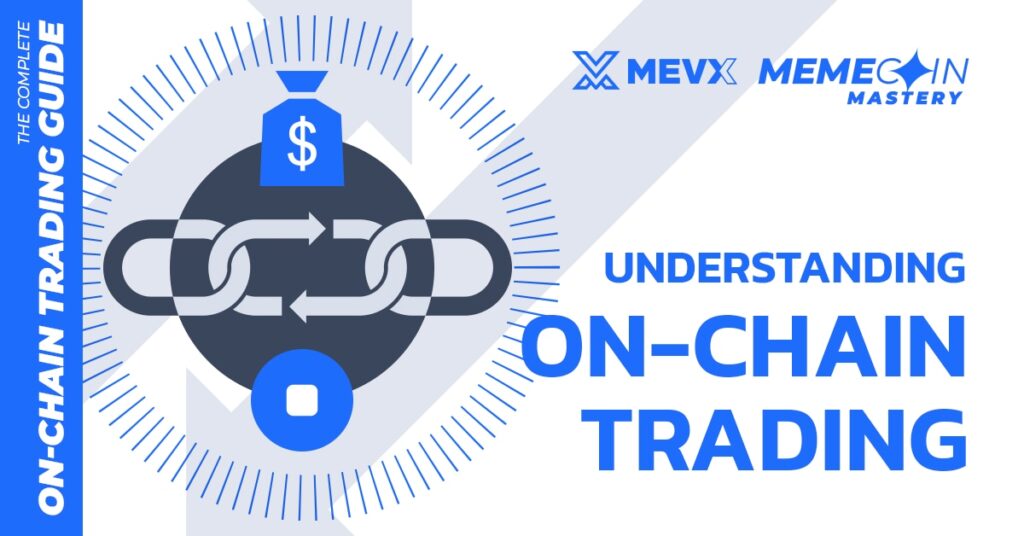Today’s most successful meme coin traders thrive in a completely different arena, the on-chain trading ecosystem, where fortunes are made and lost in minutes, not months. The meme coin market has fundamentally reshaped how we think about cryptocurrency trading. Gone are the days when waiting for a Binance listing was your best shot at catching a moonshot.

What is the On-Chain Trading Advantage?
In traditional finance, information asymmetry, where some participants have better data than others, is regulated tightly. But in the on-chain trading world, it’s open for anyone to access… if you know where and how to look.
Do on-chain trading, you can see:
- Who’s buying and selling, and in what amounts
- Real-time fund flow between wallets
- Smart contract interactions as they happen
- Token distribution and holder concentration
- Liquidity movement and pool health status
This data is public. But while it’s available to everyone, few know how to interpret it, and those who do gain an undeniable edge.

The Great Migration: From CEX to DEX
Traditional crypto trading has long revolved around centralized exchanges (CEXs). You’d buy Bitcoin on Coinbase, trade altcoins on Binance, and cross your fingers that your favorite low-cap gem would eventually get listed.
That model might still work for established coins, but it’s completely inadequate for meme coin trading.
Meme coins live and die on decentralized exchanges (DEXs). By the time a meme coin hits a centralized platform, the explosive growth phase is usually over.
The traders who made 100x or 1000x gains didn’t wait; they were there on-chain from the beginning, interacting directly with smart contracts and liquidity pools.
But this shift is about more than just timing. It’s about access to real-time, transparent data that centralized exchanges simply don’t provide.
Why Traditional Technical Analysis Fails in Meme Coin Markets
Most newbies new to meme coins start by applying the same old strategies: moving averages, Fibonacci retracements, and RSI (Relative Strength Index) levels. Unfortunately, traditional TA breaks down in meme coin markets.
Why? Because meme coins operate on fundamentally different dynamics:
- Narrative and hype drive prices more than fundamentals
- Social media sentiment often overrides chart indicators
- A single whale can move a price of 50% in seconds
- A developer can drain all liquidity instantly
That’s why on-chain trading tools, not candles or EMAs (Exponential Moving Averages), offer the insights that really matter.
Real-Time Intelligence vs. Historical Data
Most charting platforms show you what happened. On-chain analysis shows you what’s happening now.
In meme coin trading, where opportunities can vanish in seconds, this real-time edge is everything.
Let’s break down a typical meme coin launch:
- Token is created, and initial liquidity is added
- Early adopters find it via on-chain scanners
- Social momentum builds on X, Discord, and Telegram
- FOMO phase: retail floods in
- Peak hits, and sell-offs begin
Traders relying on traditional tools only catch steps 3–5. On-chain traders catch step 1, often buying before the masses even hear the name.
The Transparency Paradox
One of the most powerful, yet underused, aspects of on-chain trading is complete transparency. Every transaction, wallet, and contract is viewable in real-time. That creates a level playing field… for those who know how to use it.
With on-chain transparency, you can:
- Track the wallets of successful traders
- Detect large holders preparing to exit
- Spot suspicious accumulation or sell patterns
- Verify whether a token has real users or just price action
In traditional markets, you’d pay institutions for this level of data. On-chain, it’s free if you know where to look.
Building Your On-Chain Trading Foundation
Success in meme coin trading starts with a new skill set. It’s not just about knowing how to buy on Raydium or connect a wallet. You need to develop an on-chain trader’s mindset and toolkit:

🔍 Data Interpretation
Learn to read blockchain explorers, analyze wallet flows, and detect market behavior patterns.
🛠️ Tool Mastery
Get comfortable with DEX interfaces, liquidity scanners, contract viewers, and alert systems.
⚡ Speed & Workflow Efficiency
Build streamlined processes so you can act within seconds, not minutes.
🛡️ Risk Management
Understand contract risks, liquidity traps, slippage impact, and wallet security best practices.
Based on user-centric understanding, MevX has all you need; it’s an all-in-one trading platform that attracts most users today.
The Competitive Landscape: Why Now Is the Time
The tools for on-chain trading are becoming more accessible. You no longer need to be a Solidity developer to analyze contracts or trace wallets. Platforms like MevX are helping democratize access to alpha by packaging these tools in a clean, actionable format.
But with easier tools comes greater competition. The edge no longer lies in access; it lies in how fast and effectively you act on that information.
The top traders aren’t always the most technical. They’re the most prepared, the most disciplined, and the fastest to adapt.
Looking Forward
This article sets the stage for your journey into on-chain trading mastery. Over the next articles, we’ll explore:
- How to navigate Solana’s on-chain ecosystem
- What to look for in a meme coin contract
- How to recognize early momentum and avoid rugs
- And how to build a system that works in real-time
You’re not just learning tools. You’re building a framework for spotting and executing trades before the crowd catches on.
👉 Don’t miss the next article in our on-chain trading series, where we’ll dive into the Solana ecosystem, the #1 launchpad for meme coins today.
Follow the MevX Blog for daily lessons, trading tips, and the tools you need to succeed in on-chain trading.
Share on Social Media:
